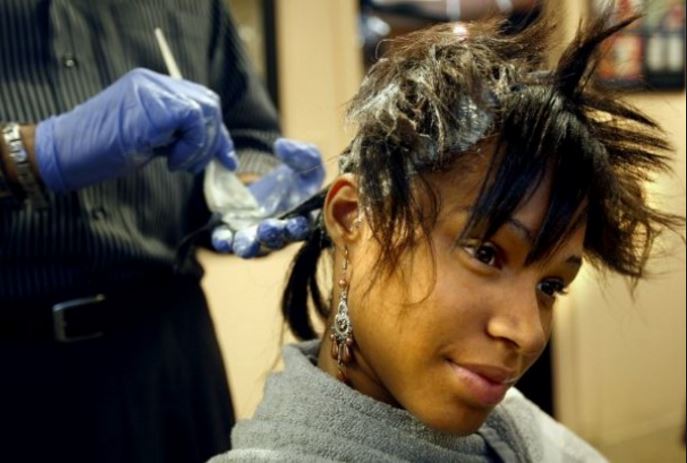
Without the right regimen, you will keep experiencing issues like breakage. But if you adhere to these five tips, you will be able to achieve healthy relaxed hair:
The major mistake we used to make back then is relaxing hair that is already relaxed. This is probably the main reason why people ended up with patches and extremely damaged hair.
When it’s time for a touch-up, coat the rest of your hair with something thick like hair food and leave the growth. The thick layer will serve as a protective barrier.
Then, always insist on only getting the new growth relaxed unless you’re getting a relaxer for the first time or doing a corrective relaxer.
- Do deep conditioning treatments often
Deep conditioning is extremely essential for relaxed hair. This is the treatment that will restore some moisture and bounciness.
The best way to ensure the moisture penetrates is to use some heat, meaning sitting under a dryer or a heating cap. Some people do these treatments as often as twice a week, once a week or every two weeks to make sure their hair never dries out. In between these treatments, moisturize and seal your hair.
- Do protein treatments once a month
Doing deep conditioning treatments is important but you also have to ensure you’re balancing that with a protein treatment. Protein will help to strengthen your stands and prevent limpness in your hair from moisture overload.
With protein, you have to use it sparingly because it can easily overwhelm your hair. This is why you should only do it once a month and not every week.
A lot of manipulation isn’t healthy for hair whether natural or relaxed. For relaxed hair especially, it needs to have breaks often because it tends to be a little weaker.
As you choose your protective styles, make sure you observe all the rules which include choosing those styles that don’t stress your edges and those that aren’t too heavy.
Also, wait at least two weeks after a touch-up before braiding because your hair is still in its weakest state.
Let this sink in, not all heat is bad. We need indirect heat for protein and conditioning treatments which is safe. The type of damaging heat you want to avoid is direct heat from tools like flat irons and blow dryers.
You can learn how to easily achieve different looks without using direct heat. Only use direct heat if you absolutely have to, and don’t forget to apply heat protectant when you do.
Source:
www.pulse.com.gh
Source link

